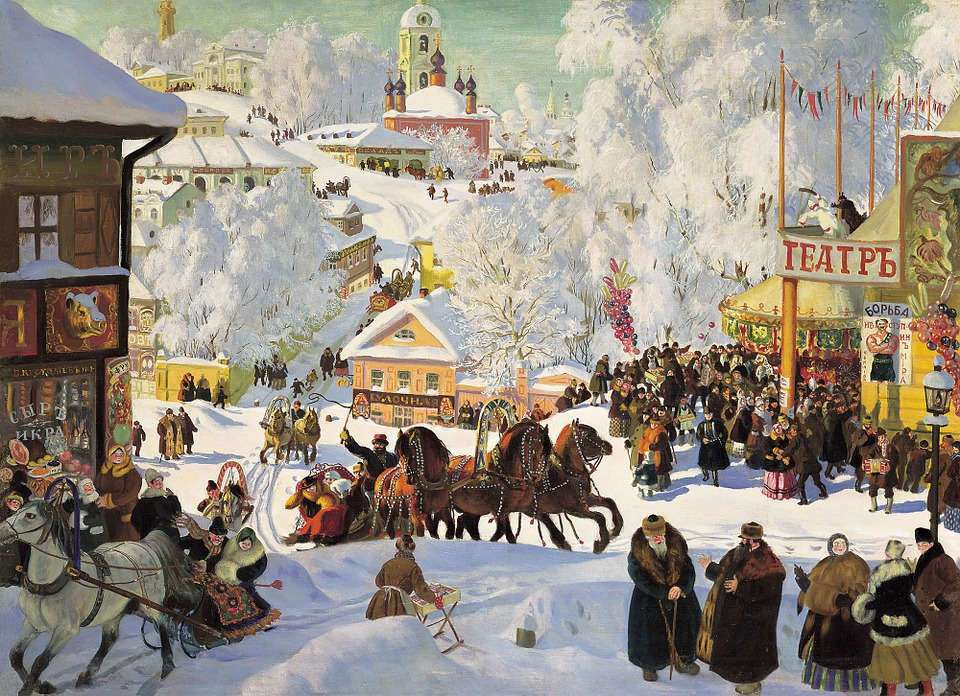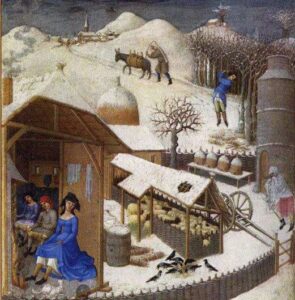It’s a little chilly in France at the end of 2024. But if the cold of yesteryear were to fall upon us, it would cause thousands of deaths. Here’s a reminder…

Temperatures are below zero in many parts of France this New Year’s Eve. Nothing unusual, this being winter. Snow, cold and icy conditions complicate our lives, disrupt transport and drive up prices. But France has already seen some particularly harsh winters, when heating, transport and food were more difficult than they are today.
Older people will remember the winter of 1956. It was certainly the coldest of the XXᵉ century. On February 12 of that year, the thermometer dropped to -36° in Corrèze! All cold records were broken. The rivers were frozen. The earth was so hard that it was impossible to bury the dead for several weeks. Birds starved and froze to death by the thousands. In the southern regions, the cold was so intense that it decimated eleven million olive trees. Sadder still, two years after Abbé Pierre’s appeal, on the evening of February 18, 1956, 147 people in France died from the cold. And 611 throughout Europe.
40 days of frost
Another harsh winter was that of 1963. It was especially remarkable for the persistence of extreme cold for three months. The frosts began on November 13, 1962, and continued until March 6, 1963, with, admittedly, a few milder periods. The lowest temperature was recorded in Vichy on January 23, 1963: -26°. In eastern France, particularly Besançon, there were 40 days without a thaw.
Further back in time, during the winter of 1846, snow fell without interruption for 4 days in Paris (from February 28 to March 4), covering the capital with a 40 cm white blanket. Unprecedented! In 1829, it froze for 54 days in a row, and the Seine was icebound.
A great famine
There were other periods of polar cold in our temperate country, which lies on the 45th parallel. Take the winter of 1709, for example. According to astronomer François Arago’s “Notices sur l’état thermométrique du globe terrestre”, it was -23.1° in Paris on January 13. The Siberian cold lasted a month. As a result, people, animals and plants suffered terribly. Many wild and domestic animals did not survive. Travelers trapped by the cold succumbed. Waterways froze, bringing mills to a standstill. That year, the great famine caused a huge death toll. The thaw didn’t help matters: the floods that followed finished off what remained of the harvest and reserves.
Wine… by the kilo

The late Middle Ages saw a kind of ice age. The most terrible winter was that of 1407. Chronicles of the time tell us that the water remained frozen for over 70 days in the kingdom of France. There was a shortage of flour in Paris. Wine froze in barrels. The clerk of the Parlement saw his ink freeze in the inkwell.
A few years later, in 1419-1420, as the English occupied part of the kingdom and laid siege to Paris, wolves ventured into the capital’s suburbs. In 1442-43, the cold brought all means of transport to a standstill. King Charles VII was blocked for three months in Montauban, and his wife Queen Marie d’Anjou was stranded in the city of Carcassonne. The winter of 1480-1481 brought another wave of intense cold. That year, frozen wine was sold… by weight.
Fragile technology
If our society, accustomed to comfort, had to face winters as harsh as those we’ve just described, it would be in dire straits. For our technology, however sophisticated, is not built to last. It is therefore fragile. In the event of heavy snowfall, cars and trucks would be unable to move, planes would be grounded, high-speed trains would be stuck in stations, and ships would dock. Electric cables would struggle to carry power, heaters would stop working, TV screens would go black… The whole economy would come to a standstill.
Just like in the Middle Ages!
Marcel GAY
